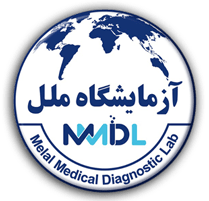Leukemia
- Acute Leukemia
- Acute Lymphoblastic Leukemia-ALL
- Acute Myeloid Leukemia-AML
- Chronic leukemia
- Chronic Myeloid Leukemia-CML
- Chronic Lymphocytic Leukemia-CLL
- Plasma cell Leukemia-PCL
- Hairy cell leukemia-HCL
- Acute Leukemia
-
Acute Lymphoblastic Leukemia – ALL
Definition:
Acute lymphoblastic leukemia/lymphoblastic lymphoma (ALL/LBL) is the most common childhood malignancy. Leukemia and lymphoma are overlapping clinical presentations of the same disease. Diagnosis and classification do not distinguish between these entities and they should be referred to collectively as ALL/LBL [1]. ALL/LBL comprises B-lineage, T-lineage, and uncommon variants (ie, NK-lineage, early T progenitor ALL [a provisional diagnostic category]).
Panel Tests:
Immunophenotyping Flow Cytometry
CD19, CD20, CD22, CD4, CD8, CD3, CD2, CD7, CD34, CD10, CD1a, CD45, TCR γ-δ, cytoplasmic CD3, TdT.
B-Cell Acute Lymphocytic Leukemia (B-ALL) Minimum Residual Disease Detection by Flow Cytometry Detect
References:
- Arber DA, Orazi A, Hasserjian R, et al. The 2016 revision to the World Health Organization classification of myeloid neoplasms and acute leukemia. Blood 2016; 127:2391.
- Pui CH, Relling MV, Downing JR. Acute lymphoblastic leukemia. N Engl J Med 2004; 350:1535.
-
Acute Myeloid Leukemia-AML
Definition:
Acute myeloid leukemia (AML) consists of a group of relatively well-defined hematopoietic neoplasms involving precursor cells committed to the myeloid line of cellular development (ie, those giving rise to granulocytic, monocytic, erythroid, or megakaryocytic elements). AML has also been called acute myelogenous leukemia and acute non-lymphocytic leukemia. AML is characterized by a clonal proliferation of myeloid precursors with a reduced capacity to differentiate into more mature cellular elements. As a result, there is an accumulation of leukemic blasts or immature forms in the bone marrow, peripheral blood, and occasionally in other tissues, with a variable reduction in the production of normal red blood cells, platelets, and mature granulocytes. The increased production of malignant cells, along with a reduction in these mature elements, results in a variety of systemic consequences including anemia, bleeding, and an increased risk of infection.
Panel Test:
Immunophenotyping Flow Cytometry
Leukemia/Lymphoma Phenotyping Evaluation by Flow Cytometry 3001780
CD13, CD33, CD117, CD34, CD14, MPO, CD61, CD64, CD41, CD15, CD45,
HLA-DR
References:
- World Health Organization Classification of Tumours of Haematopoietic and Lymphoid Tissues, Swerdlow SH, Campo E, Harris NL, et al. (Eds), IARC Press, Lyon 2008.
- Arber DA, Orazi A, Hasserjian R, et al. The 2016 revision to the World Health Organization classification of myeloid neoplasms and acute leukemia. Blood 2016; 127:2391
-
Chronic leukemia
-
Chronic Myeloid Leukemia-CML
-
Definition:
Chronic myelomonocytic leukemia (CMML) is a malignant hematopoietic stem cell disorder with clinical and pathological features of both a myeloproliferative neoplasm (MPN) and myelodysplastic syndrome (MDS). CMML is characterized by a peripheral blood monocytosis accompanied by bone marrow dysplasia; cytopenias and hepatosplenomegaly are common. There is a propensity for progression to acute myeloid leukemia (AML), which is defined by ≥20 percent marrow blast cells. Although historically considered a subtype of MDS, CMML is a clinically and genetically distinct entity with a unique clinical presentation and natural history. CMML is among the most aggressive chronic leukemias, and there are fewer effective therapies than for most other hematologic malignancies. However, murine models and genomic data have laid a scientific foundation for the generation of novel therapeutics that is anticipated to broaden treatment options for CMML patients.
Diagnostic Tests:
The diagnosis of CMML should be considered in all patients with persistent, unexplained peripheral monocytosis. The diagnosis is usually made based upon findings in the peripheral blood and bone marrow as interpreted within the clinical context.
Pathologic features:
All patients will demonstrate involvement of the peripheral blood and bone marrow at the time of presentation. Extramedullary infiltration of the spleen, liver, skin, and lymph nodes are less common.
Peripheral blood:
Cases of CMML have a persistent peripheral blood monocyte count >1000/microL that makes up >10 percent of the entire leukocyte differential. Patients with extreme leukocytosis due to other causes, such as severe infection or therapy with hematopoietic growth factors, should not be confused with CMML, as while they may have an absolute monocyte count >1000/microL, monocytes make up only a small fraction of the total white blood cell count. Despite a relative increase in monocytes, the total white blood cell count is not increased in many CMML cases. Myeloid dysplasia may be seen in all myeloid subsets, and unique abnormal mononuclear cells exhibiting features intermediate between myelocytes and monocytes, termed “paramyeloid cells,” are often apparent. By definition, the peripheral blood blast percentage must be lower than 20 percent. Cytopenias and other common features of myelodysplastic syndrome (MDS), such as neutrophil hypolobation, may be seen in the peripheral blood
Bone marrow biopsy and aspirate
The bone marrow in CMML is uniformly hypercellular, with increased mononuclear cells and their progenitors, as well as abnormal mononuclear cells exhibiting features intermediate between myelocytes and monocytes. Cells of the monocytic line can be distinguished from granulocytic myeloid precursors using a combined esterase stain.
Clinical genetic evaluation:
Cytogenetic abnormalities are identified in 30 percent of CMML cases. Given that dysplasia is often subtle in CMML and clonal karyotypic markers are absent in 70 percent of cases, clinicians are often faced with the diagnostic challenge of a patient who has persistent monocytosis in whom benign causes of monocytosis cannot be excluded. It is within this clinical scenario that mutational analysis can be beneficial. Genetic profiling can be done using cells from the bone marrow or peripheral blood. In one analysis, sequencing nine genes (ie, SRSF2, ASXL1, CBL, EZH2, JAK2, KRAS, NRAS, RUNX1, and TET2) could identify a clonal event in >90 percent of suspected CMML cases [8]. Detection of a somatic mutation provides definitive evidence of clonality, which along with persistent monocytosis supports a diagnosis of CMML. Further, mutational profiling is integrated in several prognostic scores that accurately risk stratify cases of CMML.
References:
- Verfaillie CM. Biology of chronic myelogenous leukemia. Hematol Oncol Clin North Am 1998; 12:1.
- Faderl S, Talpaz M, Estrov Z, et al. The biology of chronic myeloid leukemia. N Engl J Med 1999; 341:164.
-
Chronic Lymphocytic Leukemia-CLL
Definition:
Chronic lymphocytic leukemia (CLL) is characterized by the progressive accumulation of usually monoclonal, functionally incompetent lymphocytes. Patients with CLL commonly develop complications associated with the intrinsic immune dysfunction that results in immunodeficiency and the development of autoimmune disorders.
Panel tests:
Flow cytometry panel:
Leukemia/Lymphoma Phenotyping Evaluation by Flow Cytometry
Aid in evaluation of hematopoietic neoplasms (ie, leukemia, lymphoma)
B-CLL Panel is CD5, CD19, CD10, CD20, CD23, CD200, FMC7.
References:
- Tsiodras S, Samonis G, Keating MJ, Kontoyiannis DP. Infection and immunity in chronic lymphocytic leukemia. Mayo Clin Proc 2000; 75:1039.
- Perkins JG, Flynn JM, Howard RS, Byrd JC. Frequency and type of serious infections in fludarabine-refractory B-cell chronic lymphocytic leukemia and small lymphocytic lymphoma: implications for clinical trials in this patient population. Cancer 2002; 94:2033.
-
Plasma cell leukemia
Definition:
Plasma cell leukemia (PCL) is a rare, yet aggressive form of multiple myeloma characterized by high levels of plasma cells circulating in the peripheral blood. PCL can either originate de novo (primary PCL) or as a secondary leukemic transformation of multiple myeloma (secondary PCL).
Panel tests:
Flow cytometry panel:
CD19, CD38, CD45, CD138, CD56, Kappa, Lambda
References:
- Tiedemann RE, Gonzalez-Paz N, Kyle RA, et al. Genetic aberrations and survival in plasma cell leukemia. Leukemia 2008; 22:1044.
- Fernández de Larrea C, Kyle RA, Durie BG, et al. Plasma cell leukemia: consensus statement on diagnostic requirements, response criteria and treatment recommendations by the International Myeloma Working Group. Leukemia 2013; 27:780.
-
Hairy cell leukemia
Definition:
Hairy cell leukemia (HCL) is an uncommon chronic B cell lymphoproliferative disorder (lymphoid neoplasm) characterized by the accumulation of small mature B cell lymphoid cells with abundant cytoplasm and “hairy” projections within the peripheral blood, bone marrow, and splenic red pulp. This typically results in splenomegaly and a variable reduction in the production of normal red blood cells, platelets, mature granulocytes, and monocytes. The increased production of malignant cells, along with a reduction in these mature elements, results in a variety of systemic consequences, including splenomegaly, anemia, bleeding, and an increased risk of infection.
Panel tests:
CD19, CD11c, CD20, CD25, CD45, CD103, CD123.
References:
- Monnereau A, Slager SL, Hughes AM, et al. Medical history, lifestyle, and occupational risk factors for hairy cell leukemia: The InterLymph Non-Hodgkin Lymphoma Subtypes Project. J Natl Cancer Inst Monogr 2014; 2014:115.
- Orsi L, Delabre L, Monnereau A, et al. Occupational exposure to pesticides and lymphoid neoplasms among men: results of a French case-control study. Occup Environ Med 2009; 66:291.

